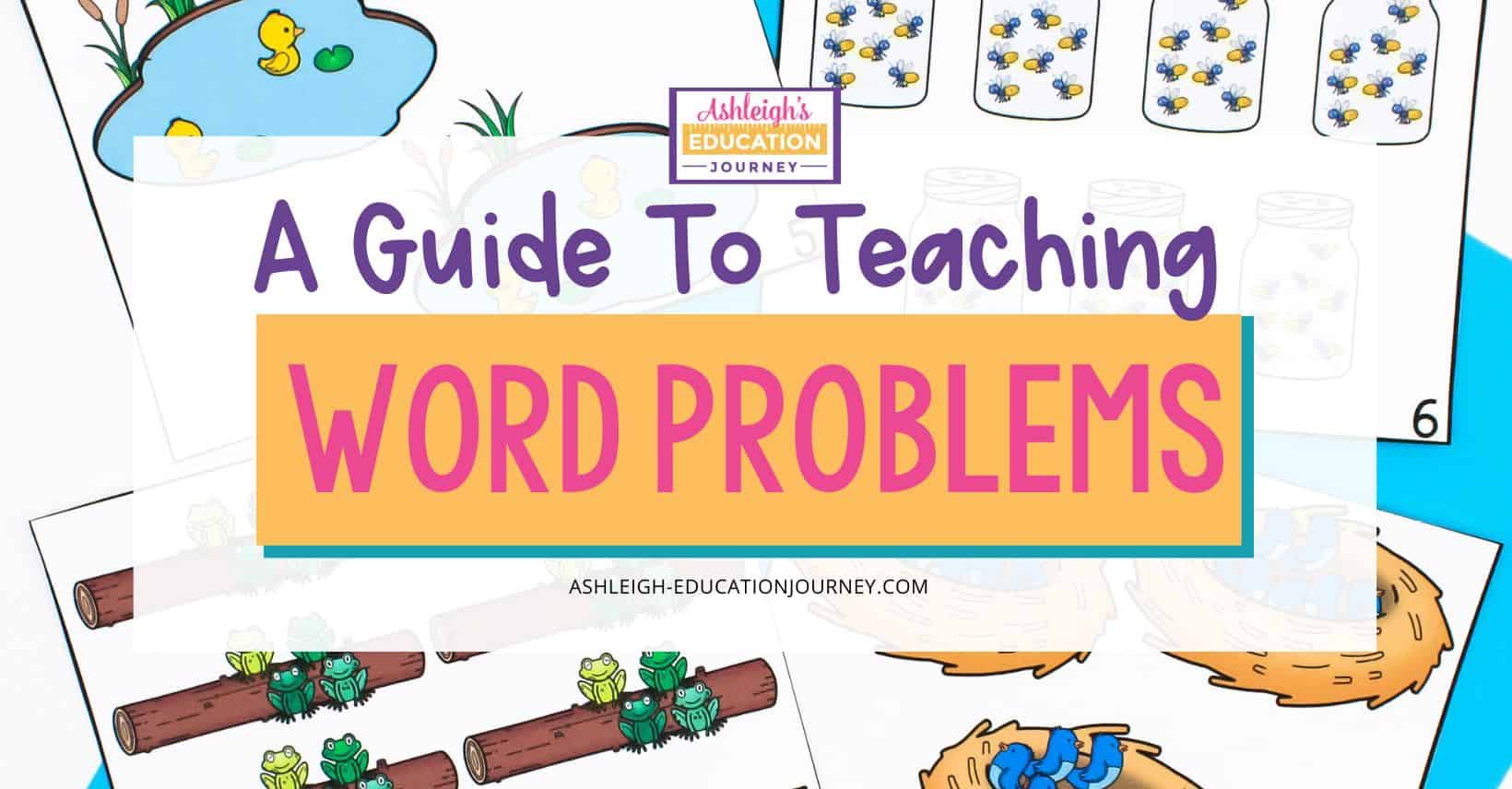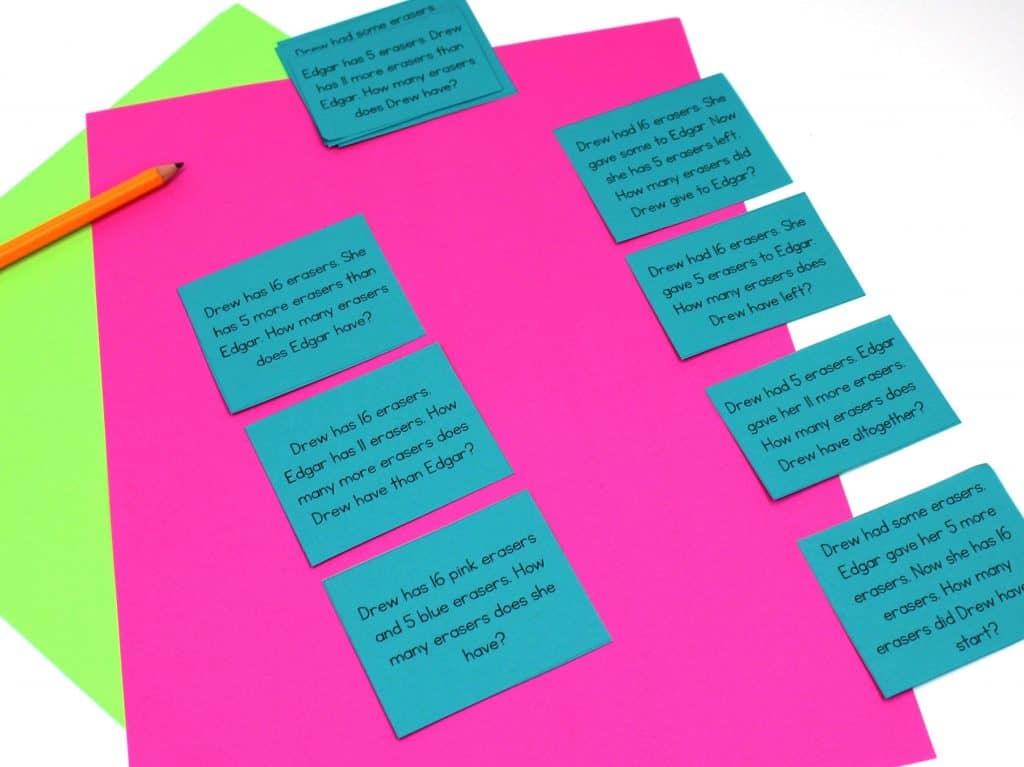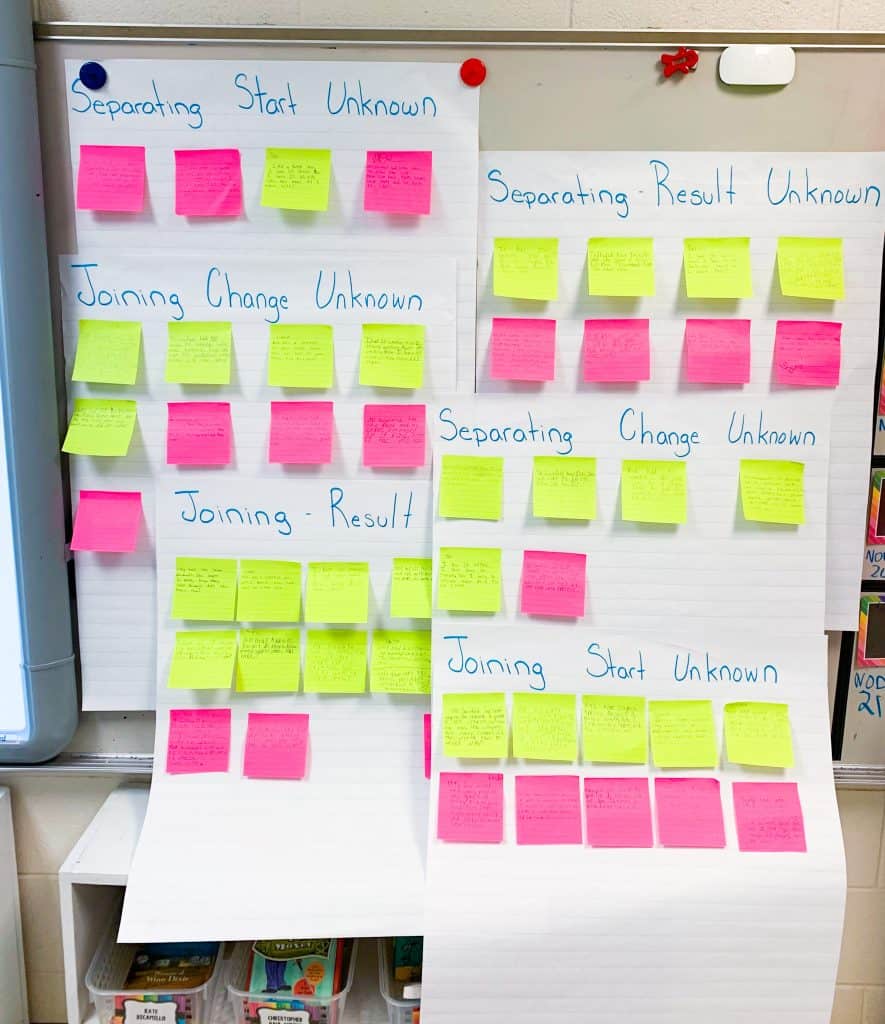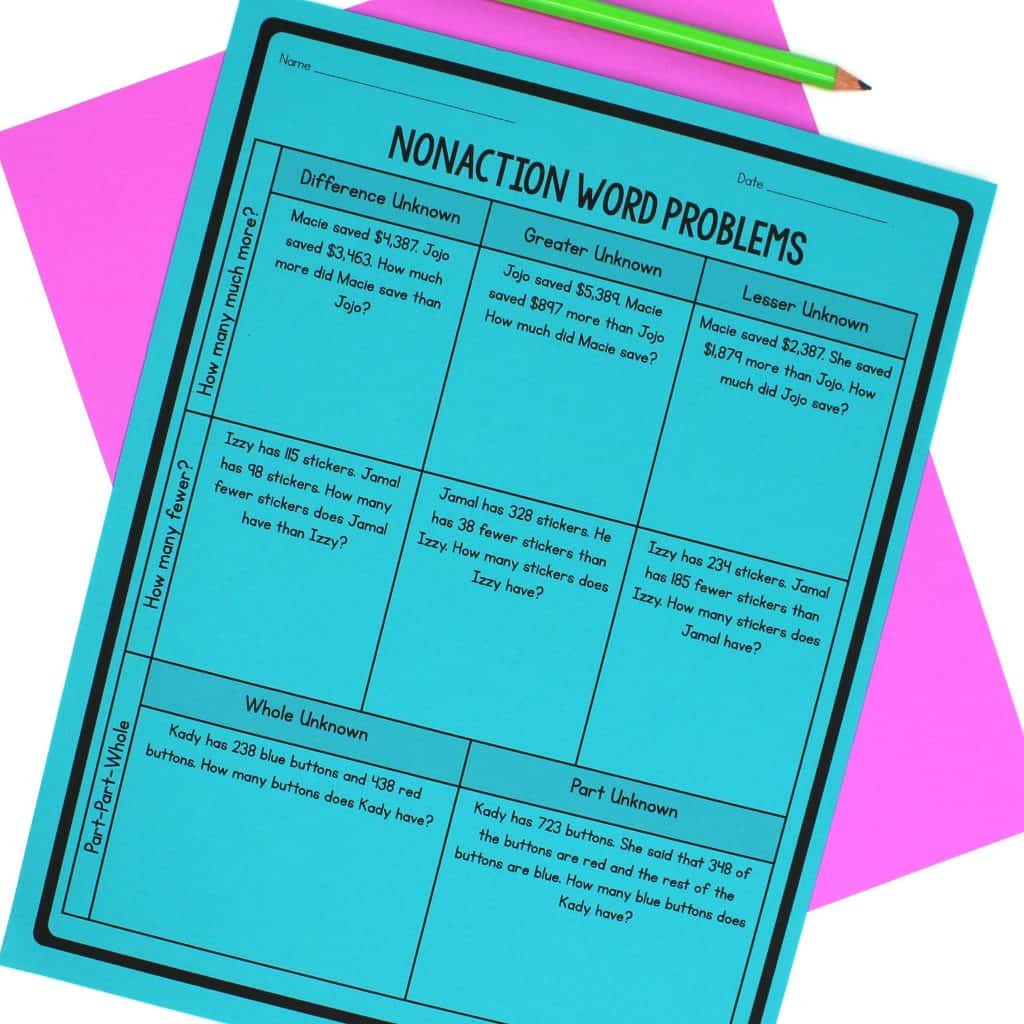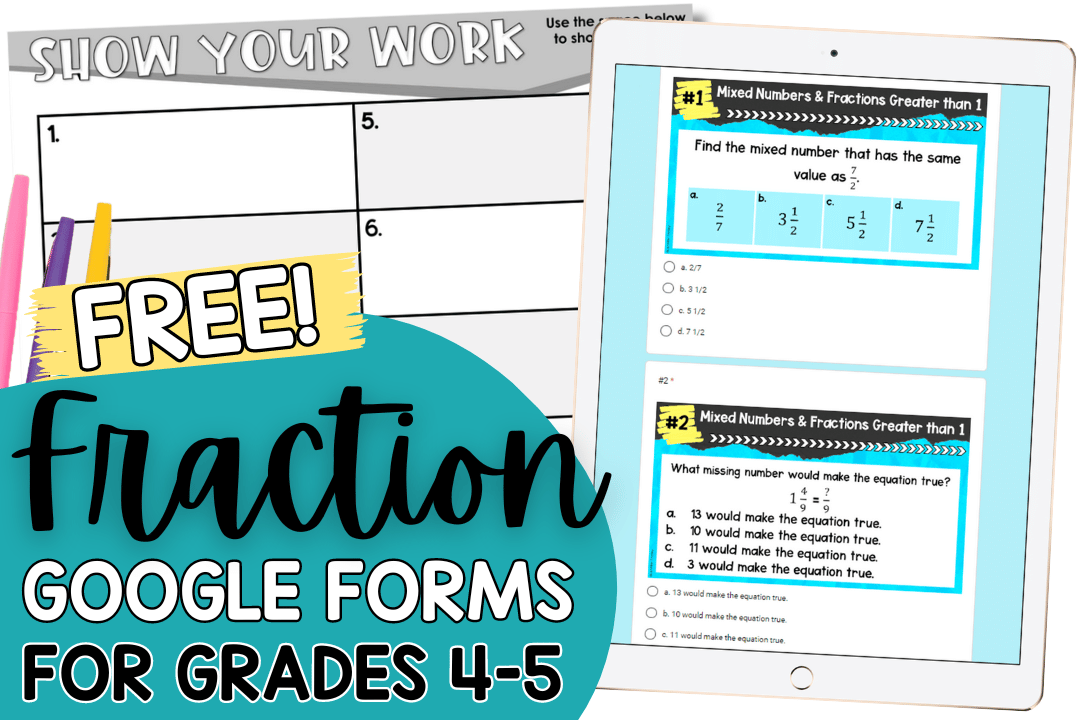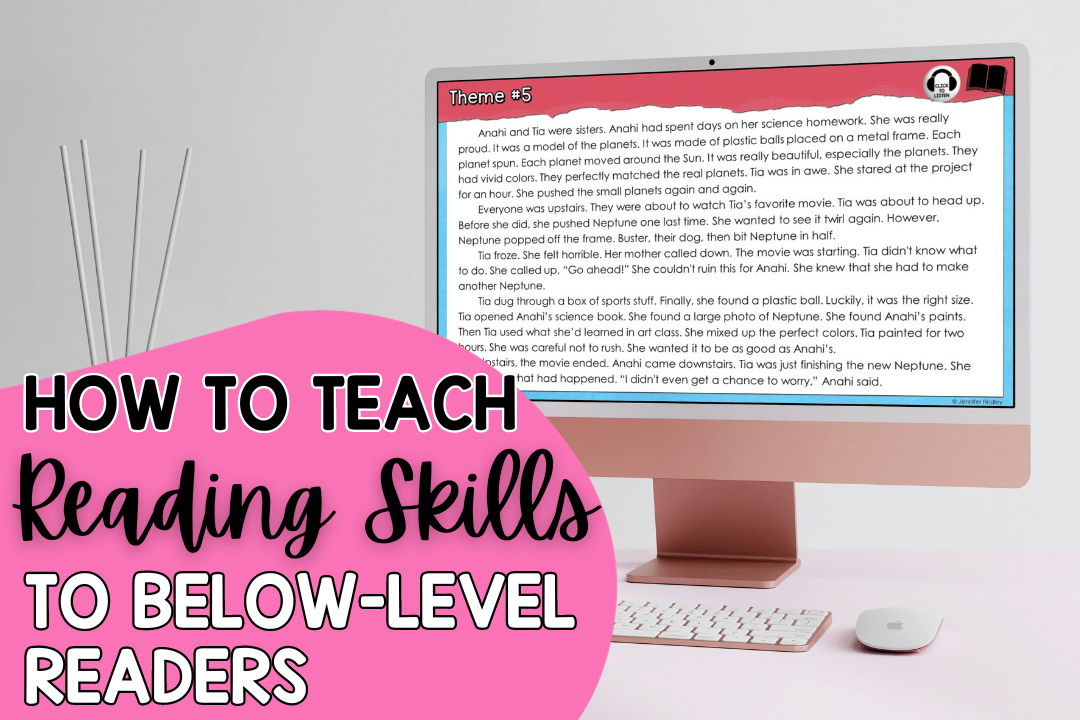Word problems have always been a challenge to students. I frequently see students immediately try to find a solution, rather than thinking about the meaning of the problem. They see a word problem and want to instantly grab the numbers and do something with them. Spoiler alert: that doesn’t work.
Addition and Subtraction Problems
Action and Non Action
I start with addition and subtraction. It’s important for students to have a strong foundation in those operations to prevent confusion with multiplication and division. One of the keys to understanding addition and subtraction word problems is to recognize action and nonaction word problems. Action does not necessarily refer to movement but that something happens to the initial quantity in the problem. I have students sort word problems into action and non action word problems.
Action Word Problems
The next step is to have students understand the different types of action word problems. In this lesson, students can reuse the sorting cards and sort the action cards into joining and separating problems. This is often challenging for students.
After students sort the cards, introduce the terms: result unknown, change unknown, and start unknown. Go through each of the cards to determine what type of unknown the card includes.
To extend this lesson, place six sheets of chart paper around the classroom. Label each sheet of chart paper with: Joining Start Unknown, Joining Change Unknown, Joining Result Unknown, Removing Start Unknown, Removing Change Unknown, Removing Result Unknown. Have students write an example of each type of word problem on a separate sticky note. After writing the word problems, students should place the sticky notes on the corresponding sheet of chart paper. Once again, I like to follow that with extra practice.
Nonaction Word Problems
Students should then learn about nonaction word problems. I repeat the same process to teach the different types of nonaction problems: Comparing Difference Unknown, Comparing Greater Unknown, Comparing Fewer Unknown, Part-Part-Whole Whole Unknown, and Part-Part-Whole Part Unknown.
I provide extra practice on an as-needed basis. You never know which groups will need additional time and support and which groups will quickly show an understanding of addition and subtraction word problems.
As a side note I do want to clarify, I do not make students memorize each type of problem. But, I do make sure they understand the work each number is doing within the word problem. Images above are from my 3rd Grade Addition and Subtraction Unit and are also in my 4th Grade Addition and Subtraction Unit.
Multiplication and Division Problems
When I begin teaching multiplication and division word problems, I don’t stop reviewing addition and subtraction word problems. It’s important to combine all operations to make sure students are seeking meaning in every word problem they solve.
Equal Groups
To fully understand equal groups, it is essential that students see the difference between the number of groups and how many objects are in each group. The table below can be used a starting place for thinking about equal group situations. It can also be a reference for students as they write their own word problems.
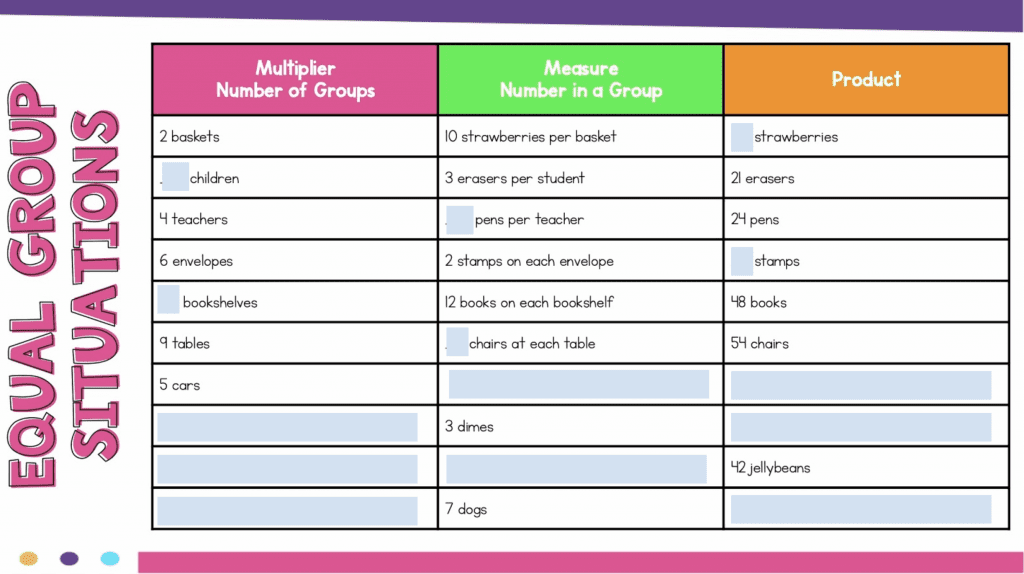 While the commutative property is helpful in memorizing multiplication facts, it is not always helpful in allowing students to develop a deep understanding of operation sense and the meaning of word problems. In word problems, most situations are not commutative, and students should be able to represent the situation accurately.
While the commutative property is helpful in memorizing multiplication facts, it is not always helpful in allowing students to develop a deep understanding of operation sense and the meaning of word problems. In word problems, most situations are not commutative, and students should be able to represent the situation accurately.
Questions like the one below allow you to see how deeply students understand multiplication situations, and it does a great job of illustrating how situations are not commutative.
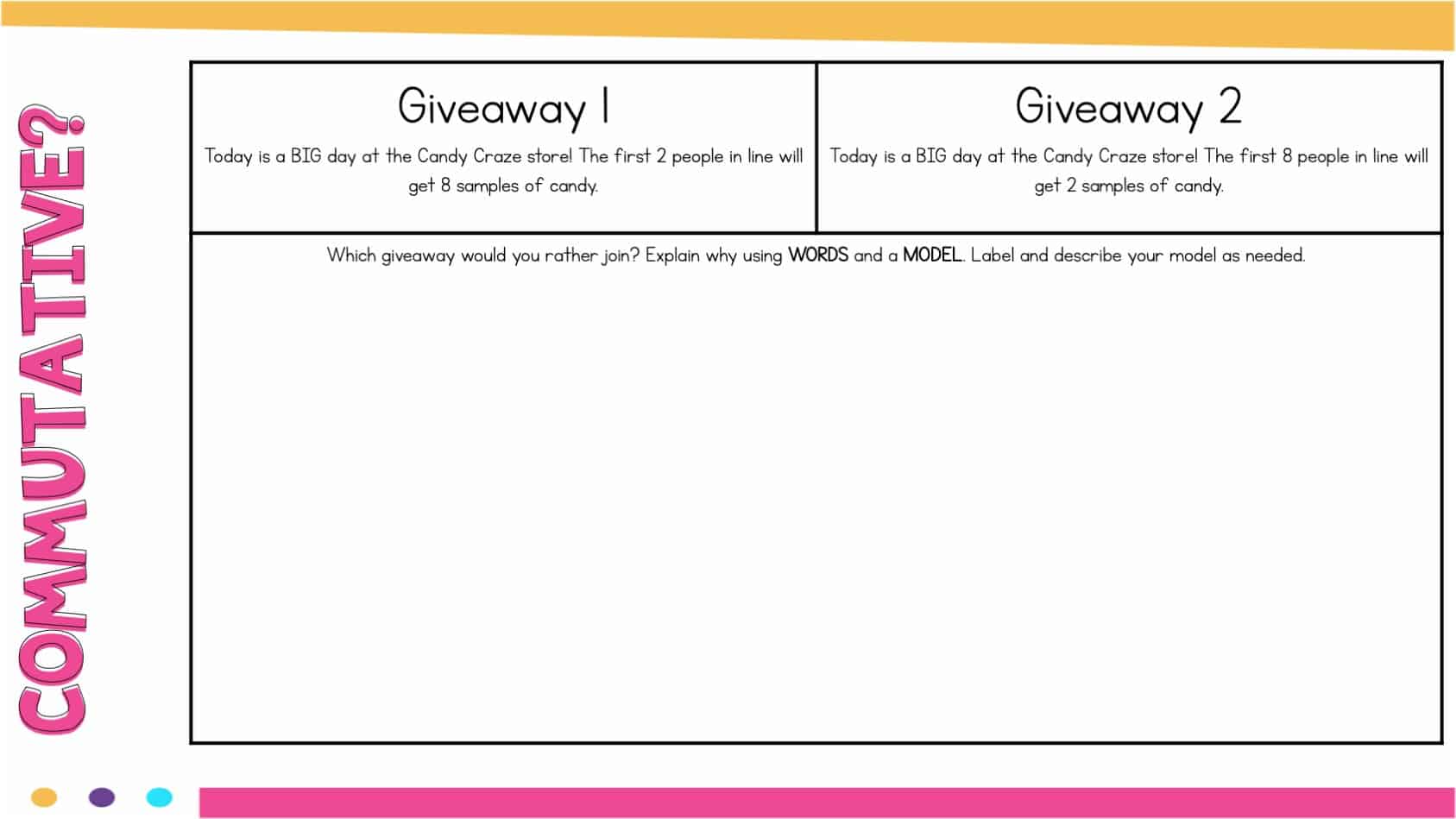
As we move into multiplication and division word problems, I have students highlight to color-code different parts of the problem. This is a fantastic way to slow students down and to get them to think about the meaning of each number.
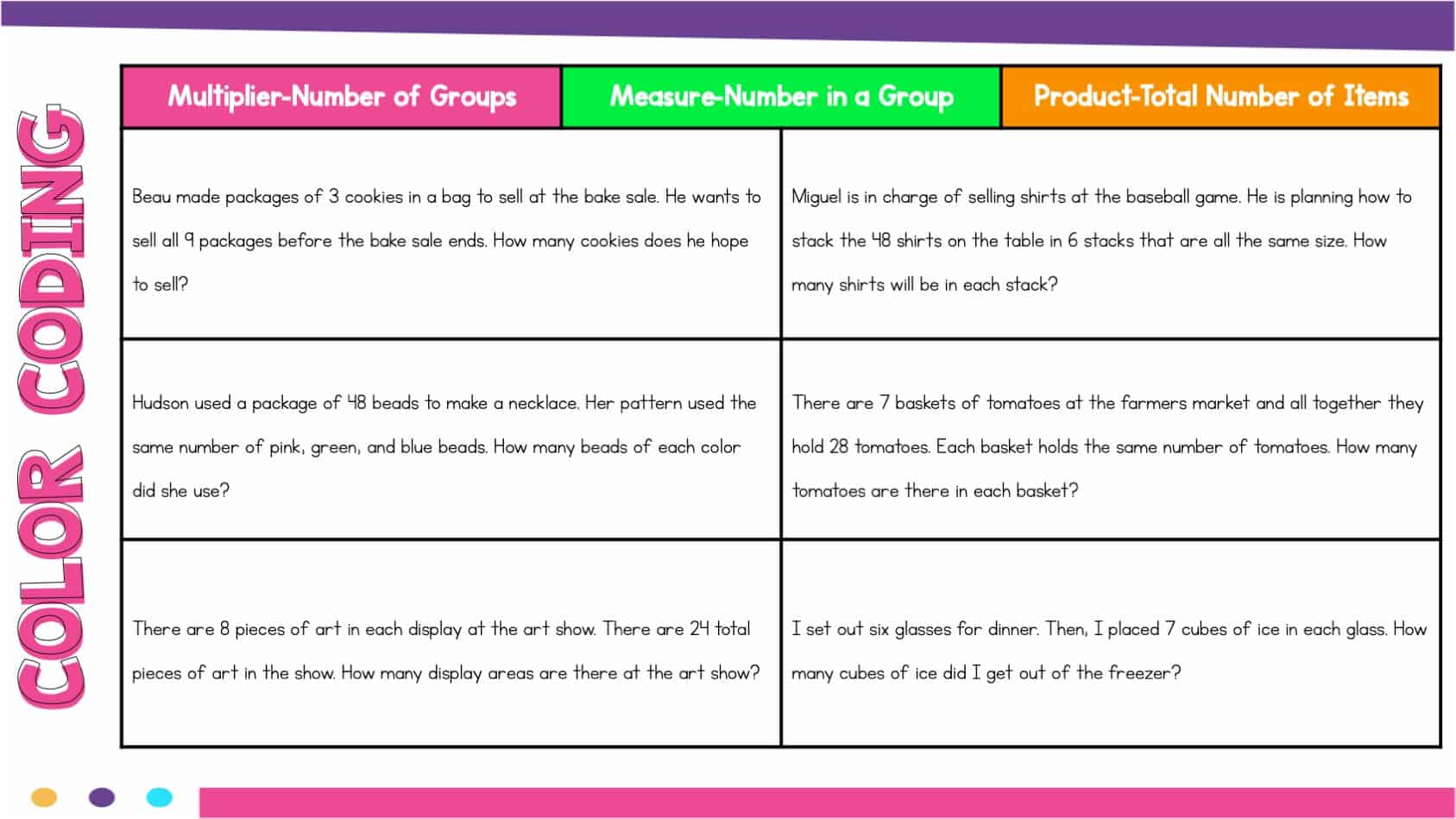
Multiplication Comparison
Multiplicative comparison problems often pose a challenge to students, as students tend to confuse additive and multiplicative comparisons. Students need the opportunity to experience acting out and building representations for this type of problem. These comparison problems should be interwoven with equal group problems.
To give students time to reason about these word problems, they can complete sorts where they discern between additive comparison problems and multiplicative comparison problems.
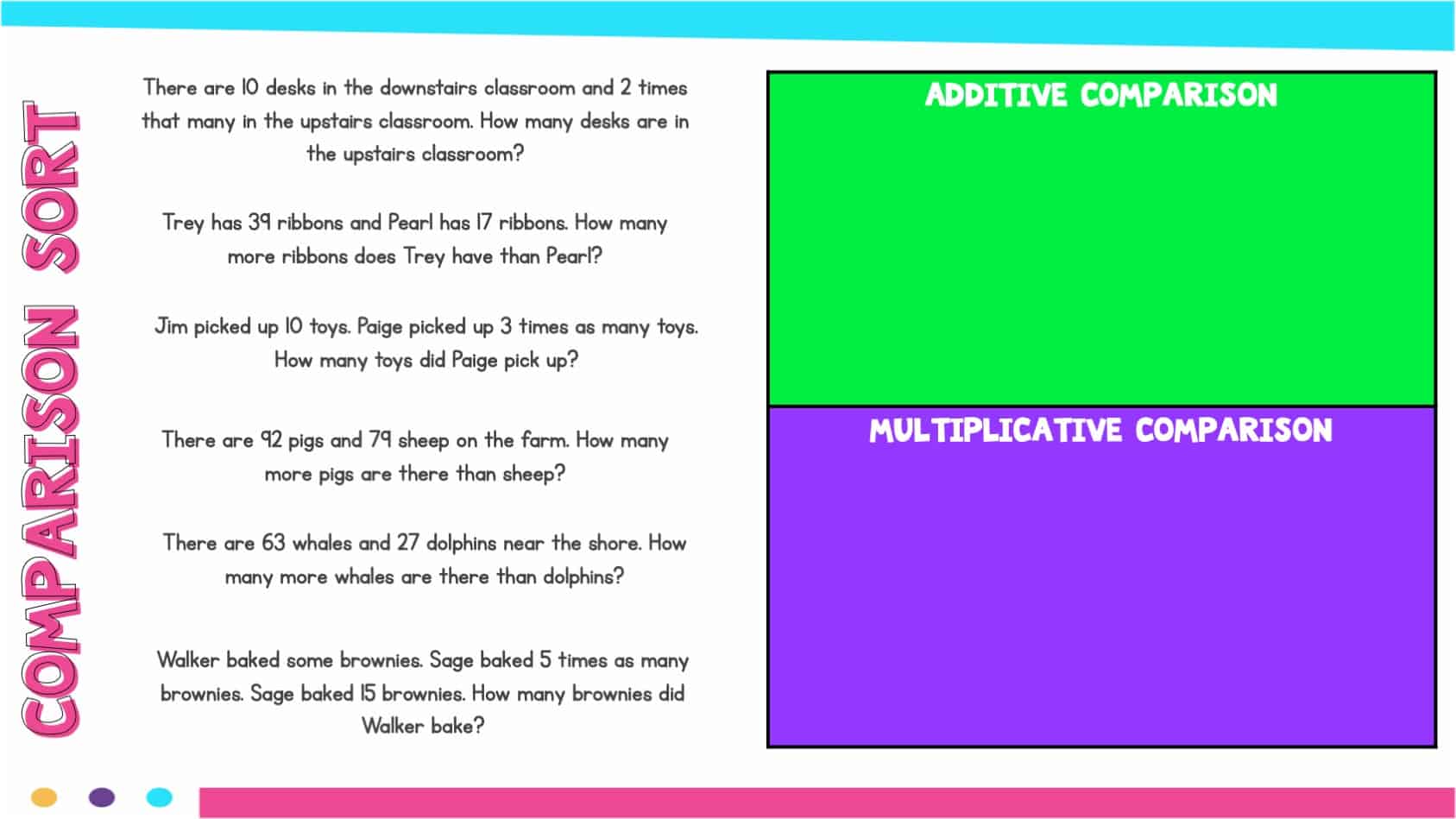
Error Analysis
Understanding word problems is a process and this operational sense will be developed over time with consistent practice and instruction. Once I teach students the basics of word problems, I like to have students complete error analysis problems. The errors found in these problems are not computational errors. Instead, they’re errors in the representation of the problem.
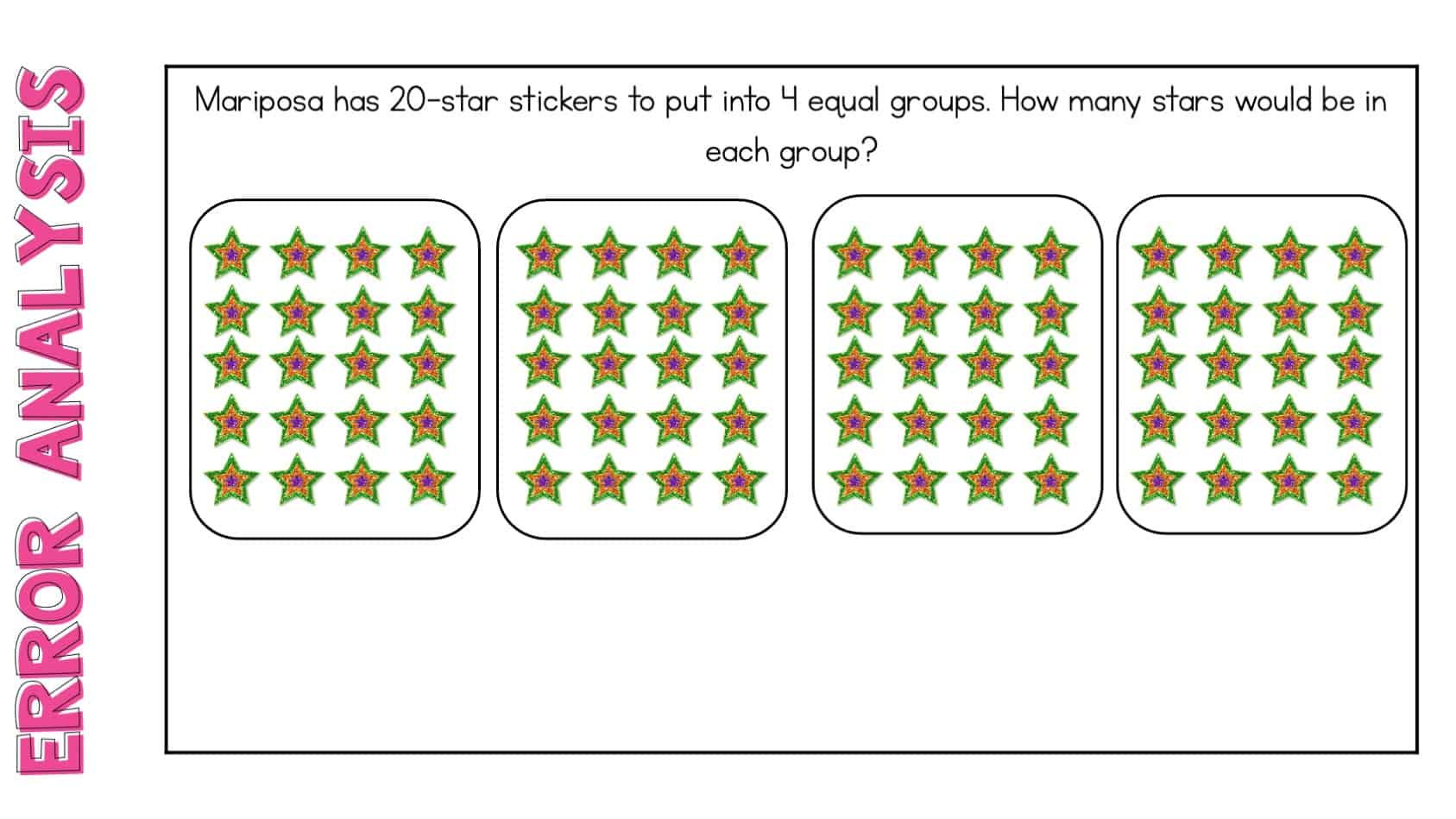
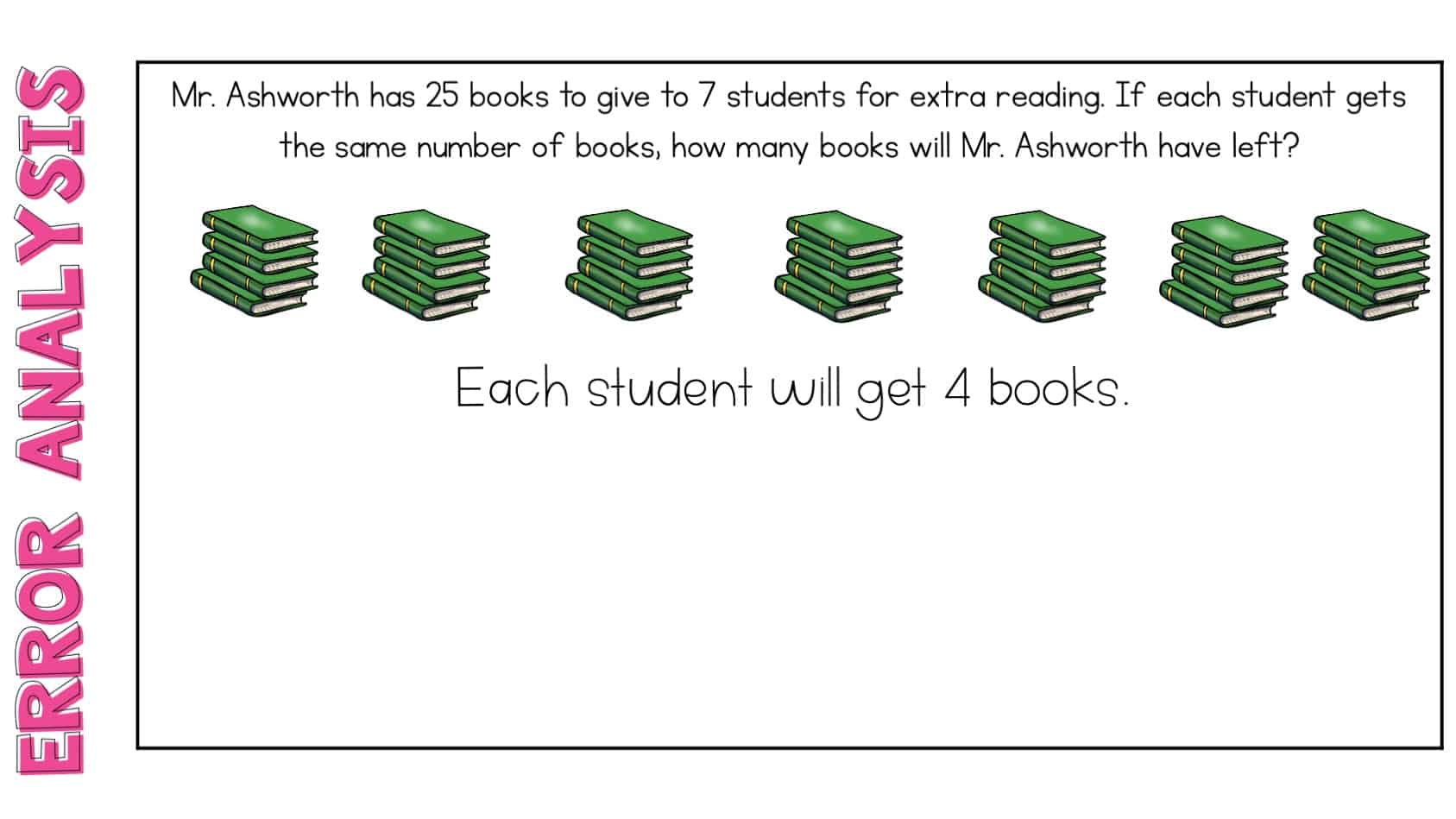
All of the slides above are from my Multiplication and Division Word Problems resource.
Writing Word Problems
During your instruction, it is incredibly beneficial to have students write their own word problems. This takes their learning to a deeper level and it gives you a greater insight into your students’ understanding. Even with a lot of word problem instruction and practice, this can be incredibly difficult for some students. I’ve discovered that many children need support and scaffolding to fully develop this skill.
I start by giving students a visual prompt AND a sentence starter. Students finish the sentence and add a question to write either a multiplication or division word problem.
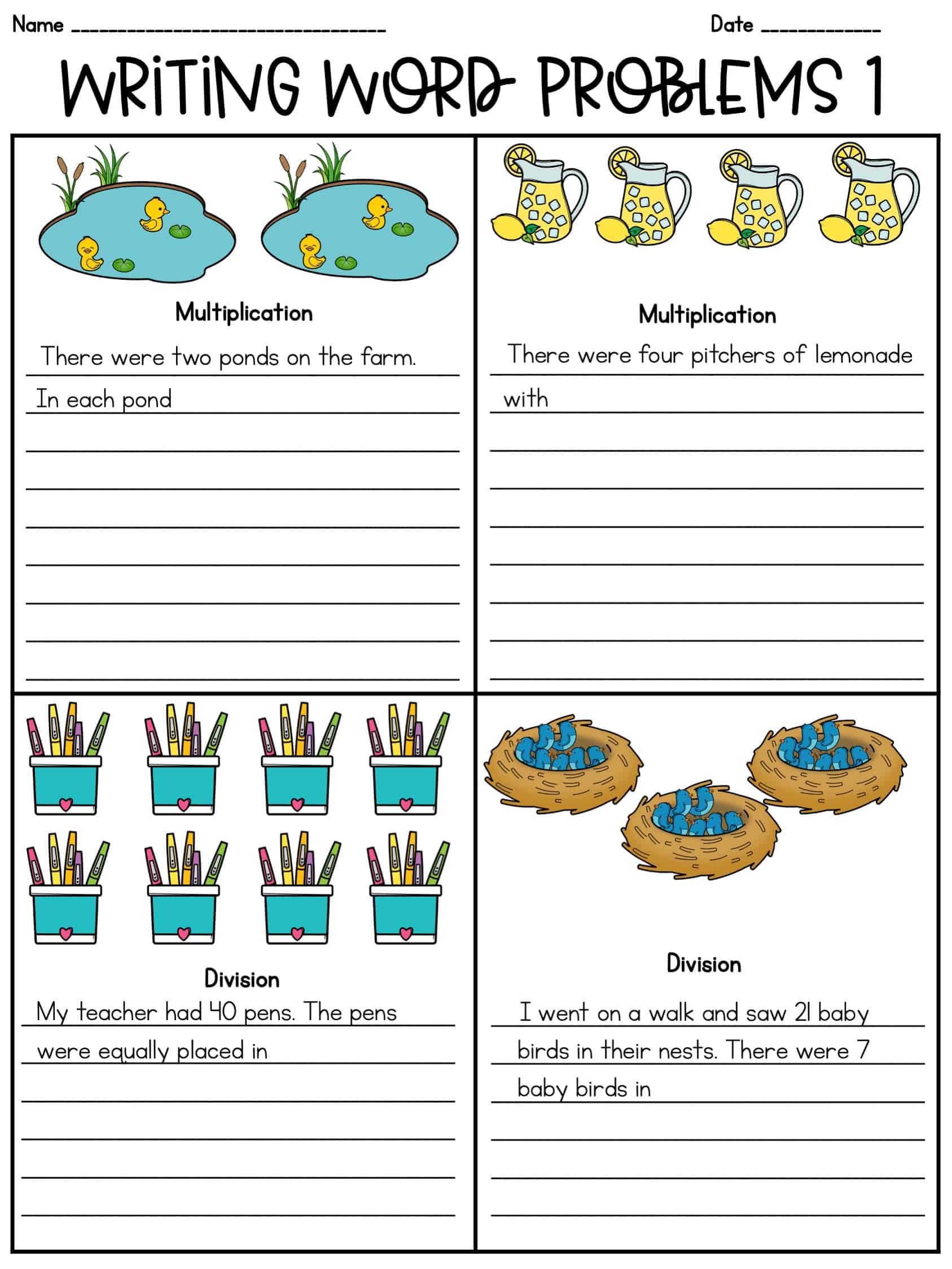
I eventually remove the sentence starter and students only use the visual prompt to write the word problem. You can set the parameters on what type of word problem students should write.
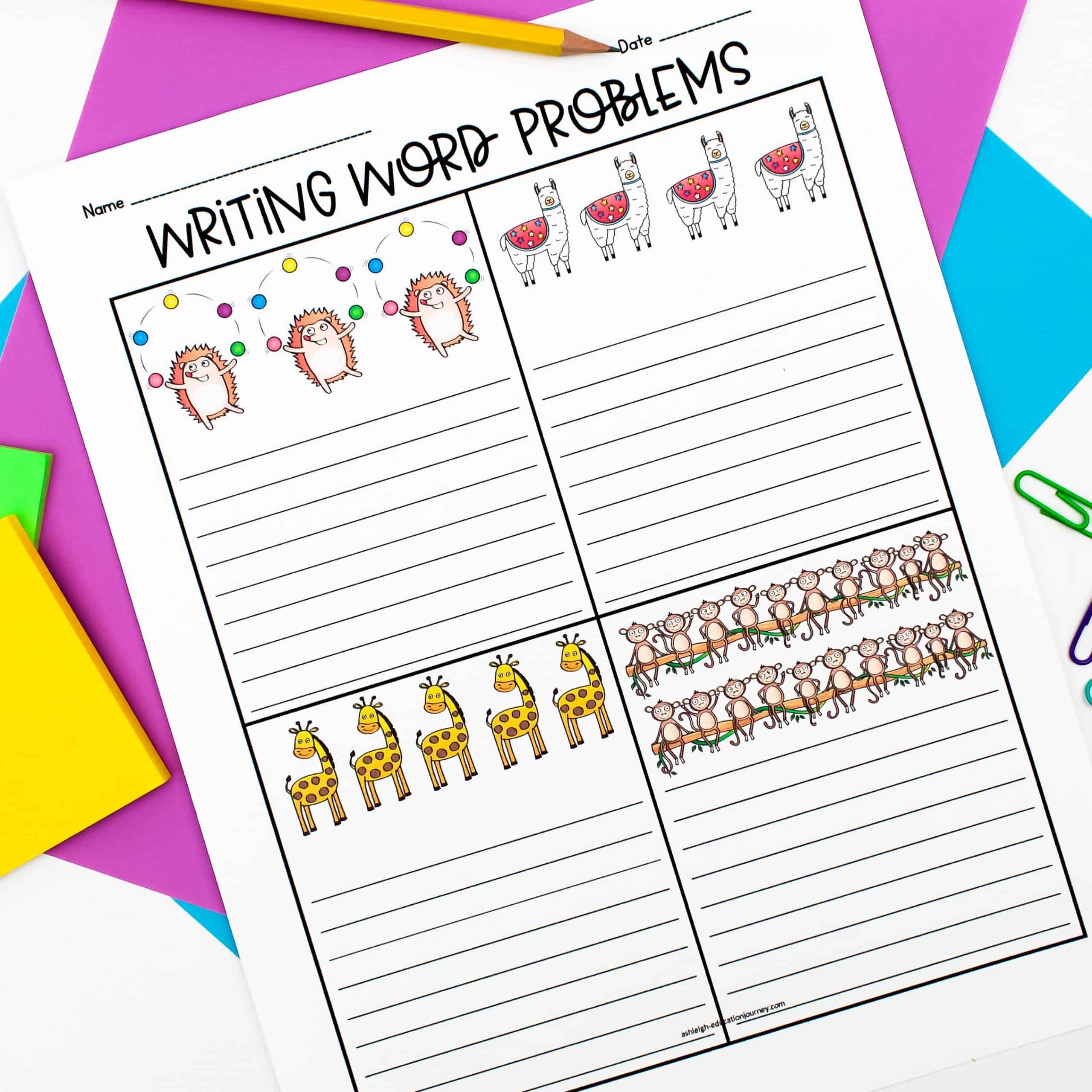
I thought this would be a fun concept for math centers, so I also included a task card version of the picture prompts. It’s really interesting to have students hear other students’ version of the word problem. The word problems may all be about four ducks swimming in two ponds, but students will add their own twist.
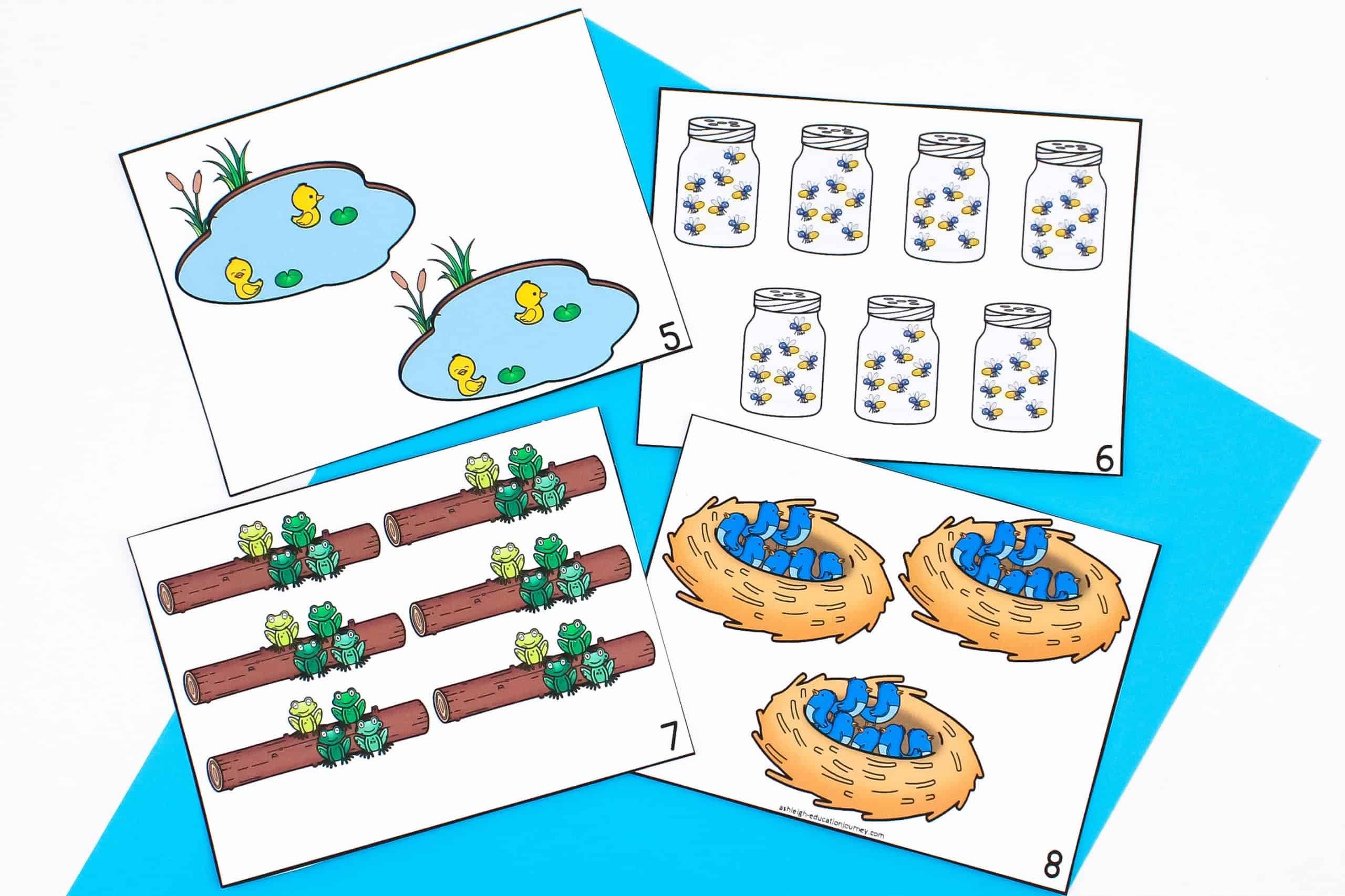
The pictures above are from my Writing Word Problems resource.
I hope that this has helped provide you with ideas and strategies for teaching word problems. Let me know how it goes!
Related Posts
